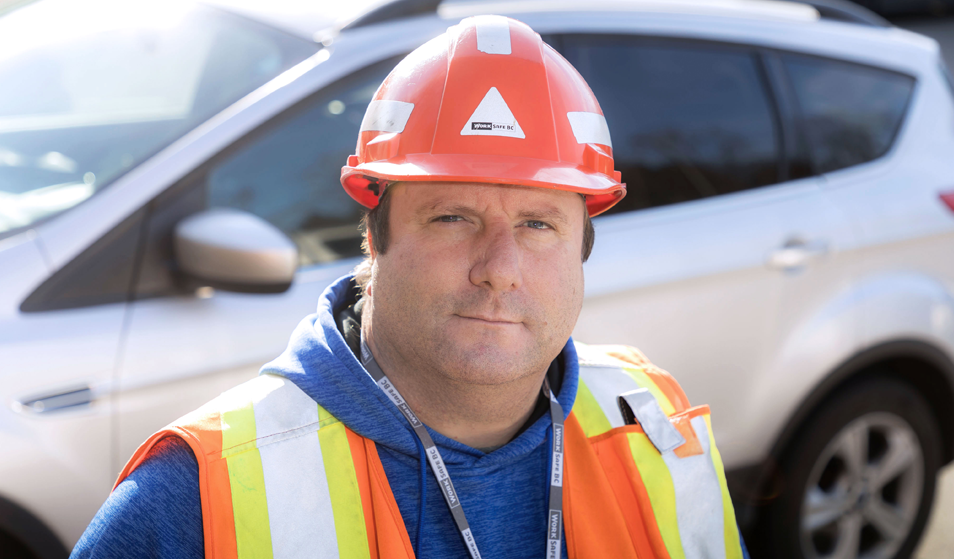Ask an officer: Safe asbestos abatement requires planning and oversight
Asbestos-related lung diseases are preventable, yet asbestos remains the leading cause of work-related deaths in B.C. The good news is that with proper planning and oversight of work, employers in the residential demolition and renovation industry can reduce or eliminate the risk of worker exposure to asbestos fibres.
Troy Davies
Occupational safety officer
Specialty team: Asbestos team in Port Moody
Years on the job: 6
This month, we answer some questions abatement contractors have had about how to meet regulation and create a safe workspace when working with hazardous materials.
What is a hazardous materials inspection report and why do I need it?
Employers sometimes start the abatement work with only the lab results of tested materials. That’s not enough information to keep workers safe. You need to get a full picture of the hazardous materials at your worksite. A qualified person needs to inspect the worksite for all hazardous materials — not just asbestos-containing materials (ACMs). The person will then collect representative samples of the suspect materials and prepare a written hazardous materials inspection report.
This report identifies whether a material is hazardous, where that material can be found, provides an estimate of the amount of that material, and includes the laboratory results.
I have my hazardous materials report, what’s next? Can I get started?
You have the hazardous materials inspection report. You should plan the work, work the plan, inspect, and correct. Breathing in asbestos fibres is the primary route of exposure to asbestos. When working with ACMs, your goal is to prevent or minimize the release of airborne asbestos fibres and the spread of ACMs at the worksite.
As part of selecting the proper control measures, the risk assessment looks at how asbestos fibres can become airborne during the asbestos work by asking questions about the ACM itself, how the ACM will be removed, and other hazards that can affect its removal.
Planning can begin as early as the bid process, when the abatement contractor visits the worksite to estimate the work involved and confirm the information in the hazardous materials inspection report. At this time, you can check for power and water supply, placement of the waste disposal bin, decontamination facility, and negative air unit, and other hazards like worksite access/egress or even workplace violence.
What do workers involved in asbestos abatement work need to know?
Some of the asbestos-related topics that must be included in the worker’s instruction and training include the hazards of asbestos, how ACMs are identified, the work procedures to be followed, how to correctly operate required engineering controls, and the correct use of personal protective equipment. An outcome of effective training is workers who can demonstrate they can perform work tasks safely.
Supervisors may require extensive training to fulfill their responsibilities. Your supervisor should observe and verify that workers are following safe work procedures inside and outside of the containment. The supervisor should correct unsafe behaviour, provide direction, and answer questions.
An asbestos abatement project has many moving parts where conditions can change in a short period of time. To stay ahead of developing unsafe working conditions, inspect for and correct deficiencies immediately. This includes reviewing the effectiveness of control measures, work methods, and work practices.
What are some examples of when a stop-work order was given at a worksite?
Here are some examples of when a stop-work order may be issued:
- The employer allowed workers to disturb asbestos-containing materials without necessary precautions to protect workers.
- Asbestos-containing materials identified in the hazardous-materials were not safely removed.
- An inspection for hazardous materials had not been conducted before demolition or renovation work began.
Where can I find more information?
If you have questions about asbestos abatement, please call the Prevention Information Line at 604.276.3100. There are also a number of resources available including:
- The Safe Work Practices for Handling Asbestos booklet
- Guideline 6.8: Procedures for abatement of asbestos materials during house and building demolition/renovation
- The Ten simple steps to complying with asbestos abatement booklet
This information originally appeared in the January/February 2019 issue of WorkSafe Magazine. To read more or to subscribe, visit WorkSafe Magazine.

